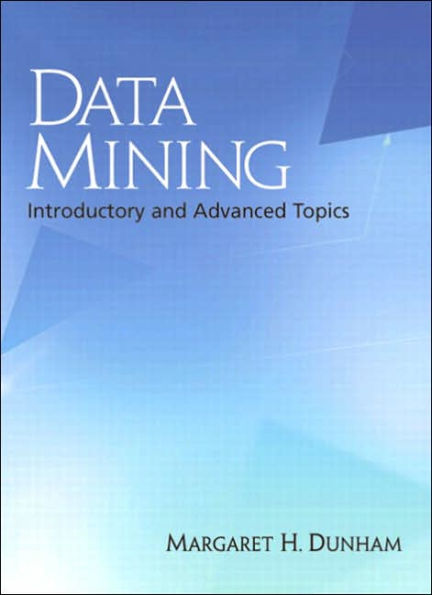Data doubles about every year, but useful information seems to be decreasing. The area of data mining has arisen over the last decade to address this problem. It has become not only an important research area, but also one with large potential in the real world. Current business users of data mining products achieve millions of dollars a year in savings by using data mining techniques to reduce the cost of day to day business operations. Data mining techniques are proving to be extremely useful in detecting and predicting terrorism.
The purpose of this book is to introduce the reader to various data mining concepts and algorithms. The book is concise yet thorough in its coverage of the many data mining topics. Clearly written algorithms with accompanying pseudocode are used to describe approaches. A database perspective is used throughout. This means that I examine algorithms, data structures, data types, and complexity of algorithms and space. The emphasis is on the use of data mining concepts in real-world applications with large database components.
Data mining research and practice is in a state similar to that of databases in the 1960s. At that time applications programmers had to create an entire database environment each time they wrote a program. With the development of the relational data model, query processing and optimization techniques, transaction management strategies, and ad hoc query languages (SQL) and interfaces, the current environment is drastically different. The evolution of data mining techniques may take a similar path over the next few decades, making data mining techniques easier to use and develop. The objective of this book is to help in this process.
The intended audience of this book is either the experienced database professional who wishes to learn more about data mining or graduate level computer science students who have completed at least an introductory database course. The book is meant to be used as the basis of a one-semester graduate level course covering the basic data mining concepts. It may also be used as reference book for computer professionals and researchers.
The book is divided into four major parts: Introduction, Core Topics, Advanced Topics, and Appendix. The introduction covers background information needed to understand the later material. In addition, it examines topics related to data mining such as OLAP, data warehousing, information retrieval, and machine learning. In the first chapter of the introduction I provide a very cursory overview of data mining and how it relates to the complete KDD process. The second chapter surveys topics related to data mining. While this is not crucial to the coverage of data mining and need not be read to understand later chapters, it provides the interested reader with an understanding and appreciation of how data mining concepts relate to other areas. To thoroughly understand and appreciate the data mining algorithms presented in subsequent chapters, it is important that the reader realize that data mining is not an isolated subject. It has its basis in many related disciplines that are equally important on their own. The third chapter in this part surveys some techniques used to implement data mining algorithms. These include statistical techniques, neural networks, and decision trees. This part of the book provides the reader with an understanding of the basic data mining concepts. It also serves as a standalone survey of the entire data mining area.
The Core Topics covered are classification, clustering, and association rules. I view these as the major data mining functions. Other data mining concepts (such as prediction, regression, and pattern matching) may be viewed as special cases of these three. In each of these chapters I concentrate on coverage of the most commonly used algorithms of each type. Our coverage includes pseudocode for these algorithms, an explanation of them and examples illustrating their use.
The advanced topics part looks at various concepts that complicate data mining applications. I concentrate on temporal data, spatial data, and Web mining. Again, algorithms and pseudocode are provided.
In the appendix, production data mining systems are surveyed. I will keep a more up to data list on the Web page for the book. I thank all the representatives of the various companies who helped me correct and update my descriptions of their products.
All chapters include exercises covering the material in that chapter. In addition to conventional types of exercises that either test the student's understanding of the material or require him to apply what he has learned. I also include some exercises that require implementation (coding) and research. A one-semester course would cover the core topics and one or more of the advanced ones.






